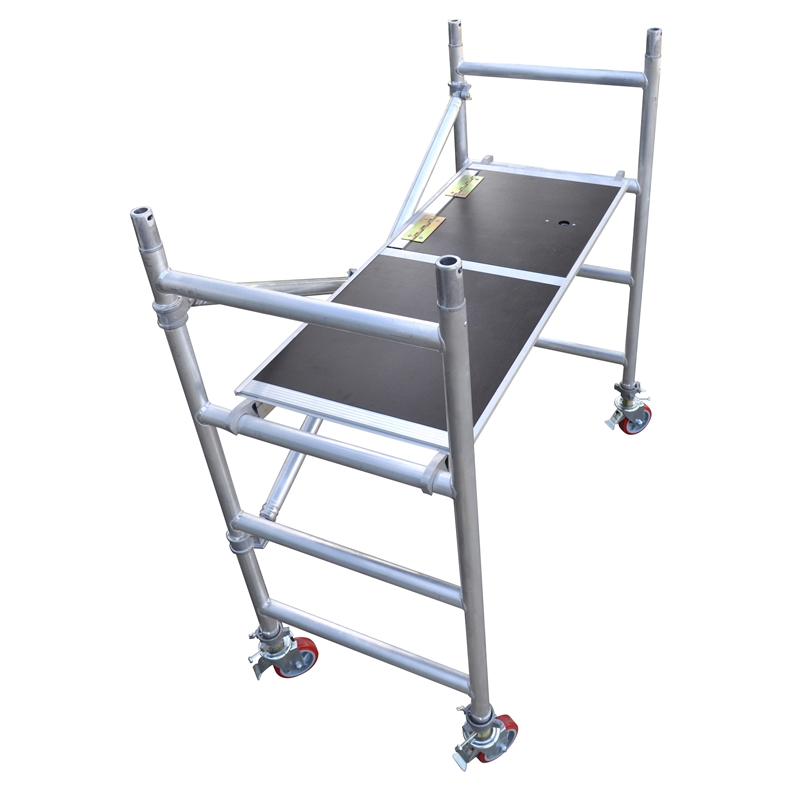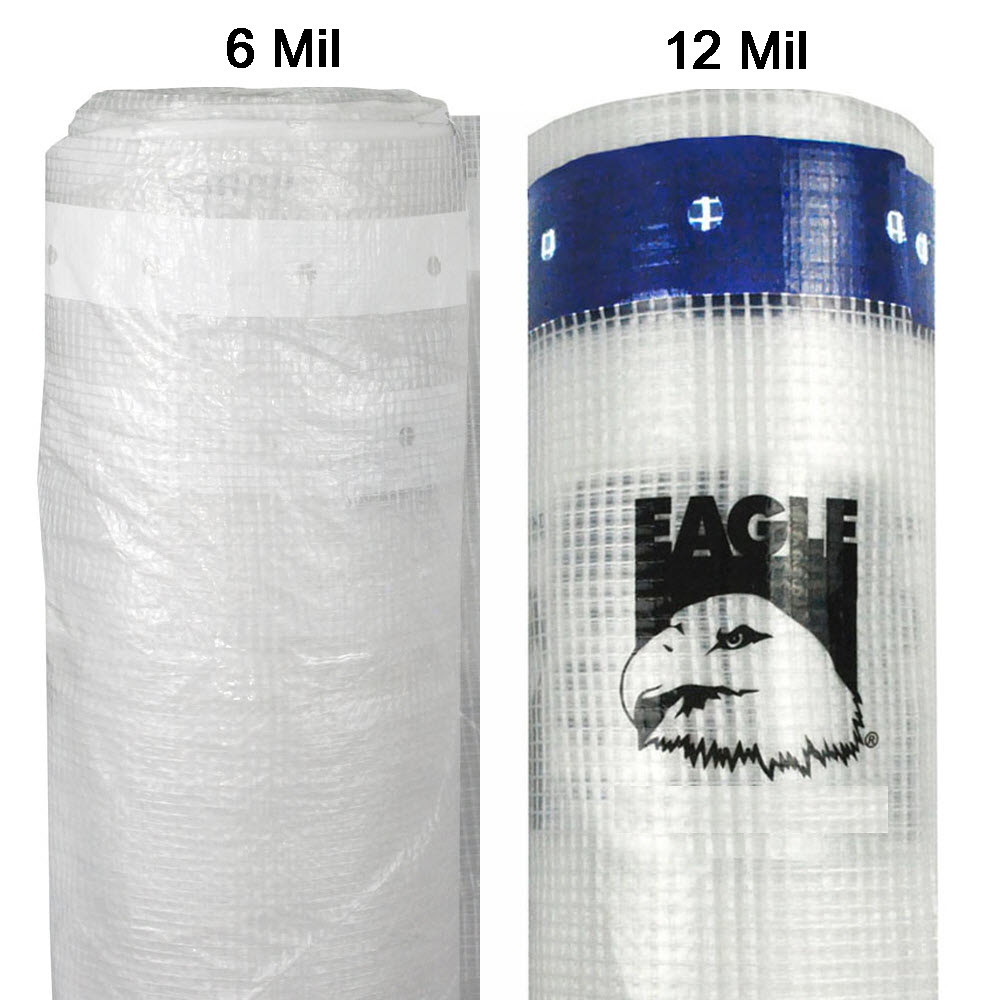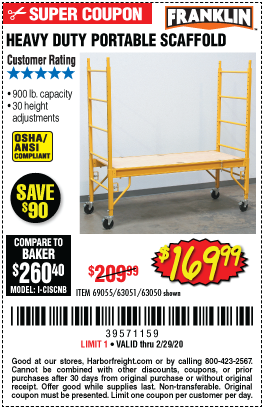

OSHA won’t tell you that they play everything safe. But I know from my experience those weights are conservative, and they will hold more weight. Look for, sponginess, sounds like it’s overstressed or cracking, don’t use it. But you should be able to tell if you’re on the ladder and there it feels like it won’t hold your weight, then by all means don’t use it. And I’m not telling you to go get a ladder and load it up. put the ladder on a secure surface half a foot off the ground and try it yourself. But if you are just on it and walking back and forth it is safe.

So yes you don’t want to get on the ladder and start jumping up and down on it. If you take 200 lbs and drop it 12″ it will hit with 1783lbs of pressure. I have my self my equipment and materials on it and I have never had it break or had any trouble. Such at if you take my ladder and extend it and open it flat and lay a plank on it and use it as a deck to work on the side of a building. Yes this does change depending on how you use it. I was always told for a long time now that the ratings of ladders is 5 times what the actual weight limit is. I have a little giant ladder, that holds 250 lbs, I weight 300 lbs and have never had any trouble with it not holding my weight. We rent and sell ALL types of ladders and scaffolding that the industry offers including our own American-made Sunset Ladder Co and EZ Lift™ brands. Sunset Ladder and Scaffold rents and sells the safest and highest quality ladders, scaffolding and related products available since 1929. Here is a quick recap of duty ratings and load capacities: Type III (Light Duty) These ladders are typically manufactured in lengths between 3 to 6 feet. They only handle a load capacity of 200 lbs and are primarily used for light-duty use. Type III ladders are most typically household ladders. Type II ladders are manufactured in wood, fiberglass, and aluminum and are commonly used for medium-duty use. They are used in more commercial applications like painters, interior decorators, maintenance workers, and electricians. Type 11 ladders also run in lengths of 3 to 20 feet long. Type1AA step ladders are built for occupant loads up to 375 lbs.Type1A step ladders are built for occupant loads up to 300 lbs.Type 1 step ladders are built for occupant loads up to 250 lbs.This rating is broken down into three subcategories: Regardless of the material construction of the ladder, Type 1 ladders are built in lengths from 3 to 20 feet.
#Lite portable scaffold professional#
There are five categories of ladder Duty Ratings:Ī Type I ladder is the most widely used for professional services like that of contractors, public utilities, and construction workers.

So do not assume that a ladder with longer reach has a higher weight capacity. There is no correlation between the ladder length and weight capacity. Safety standards require a Duty Rating sticker to be placed on the side of every ladder. Weight of tools and supplies being used and stored on the ladder.
#Lite portable scaffold plus#

Ladders are more preferred for these multiple benefits as it has a longer life and can be used in harsh and hard condition. (Fiber Reinforced Plastic) ladders which are used in the range from 4ft to 55ft for multiple uses and are applicable for all projects practice. The Aluminium ladder is much easier to carry, light-weighted and easily affordable.Īluminium was most used and the user needed this material for their project than any other material like steel, timber or wood. Height and recommended to use up to 12 to 15ft, also which is self-supporting. most probably the normal ladder is a utility for working at a Ladders with respective heights, size, weight and structure are available widely in the market. Aluminium Ladders are most commonly used folding where it's used for reaching any heights to attain the work, as there are so many types of Aluminium


 0 kommentar(er)
0 kommentar(er)
